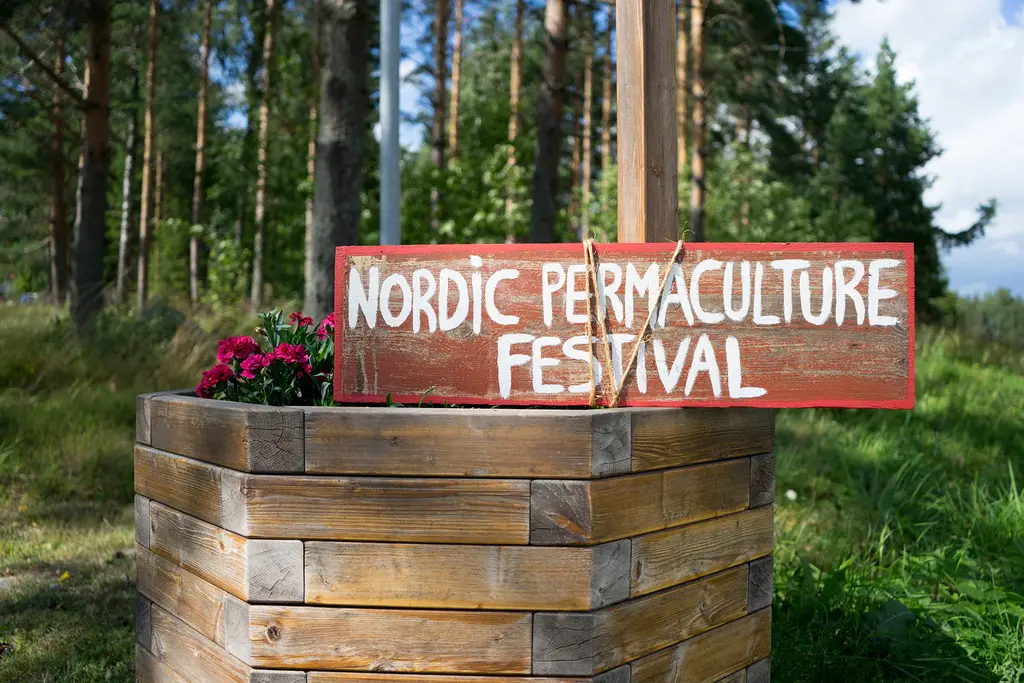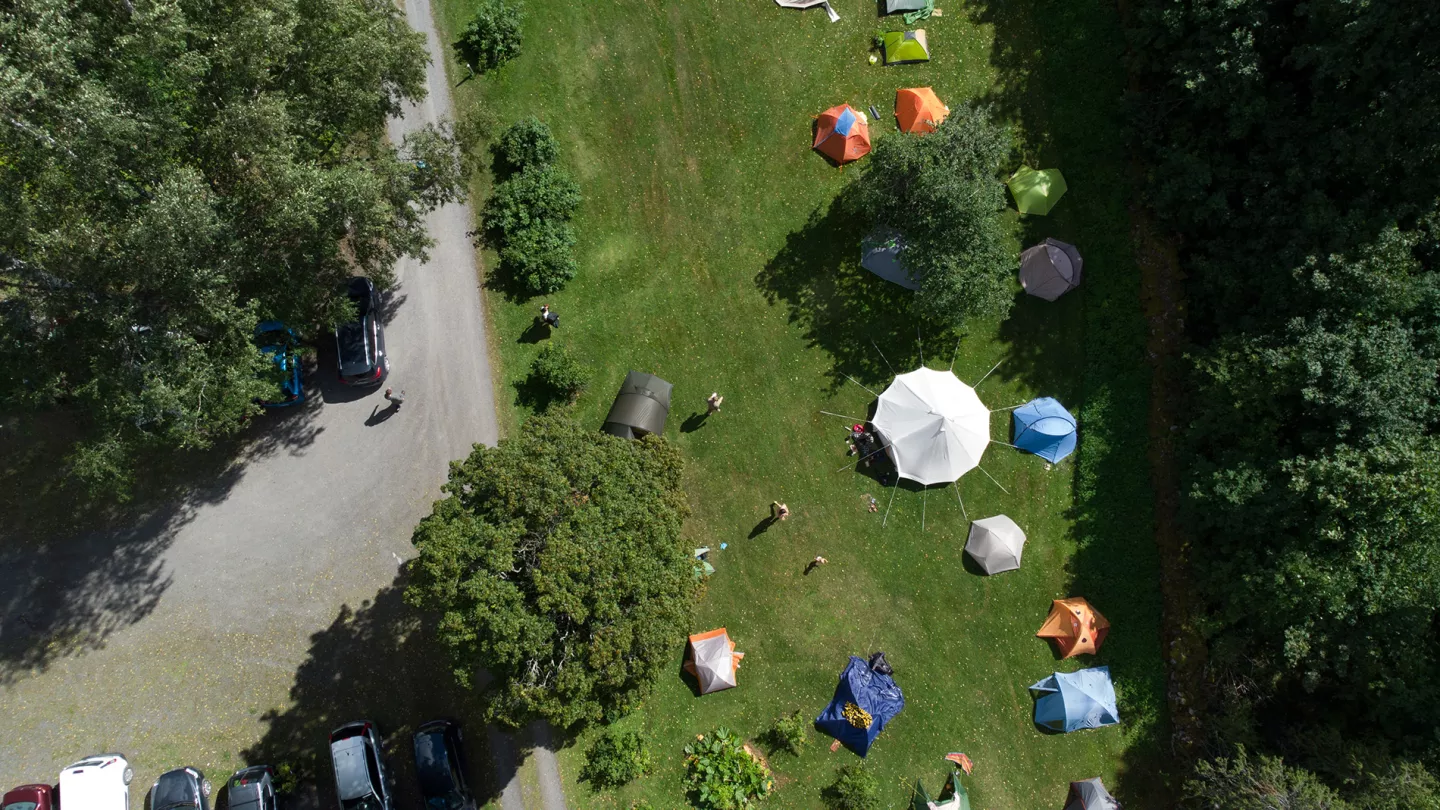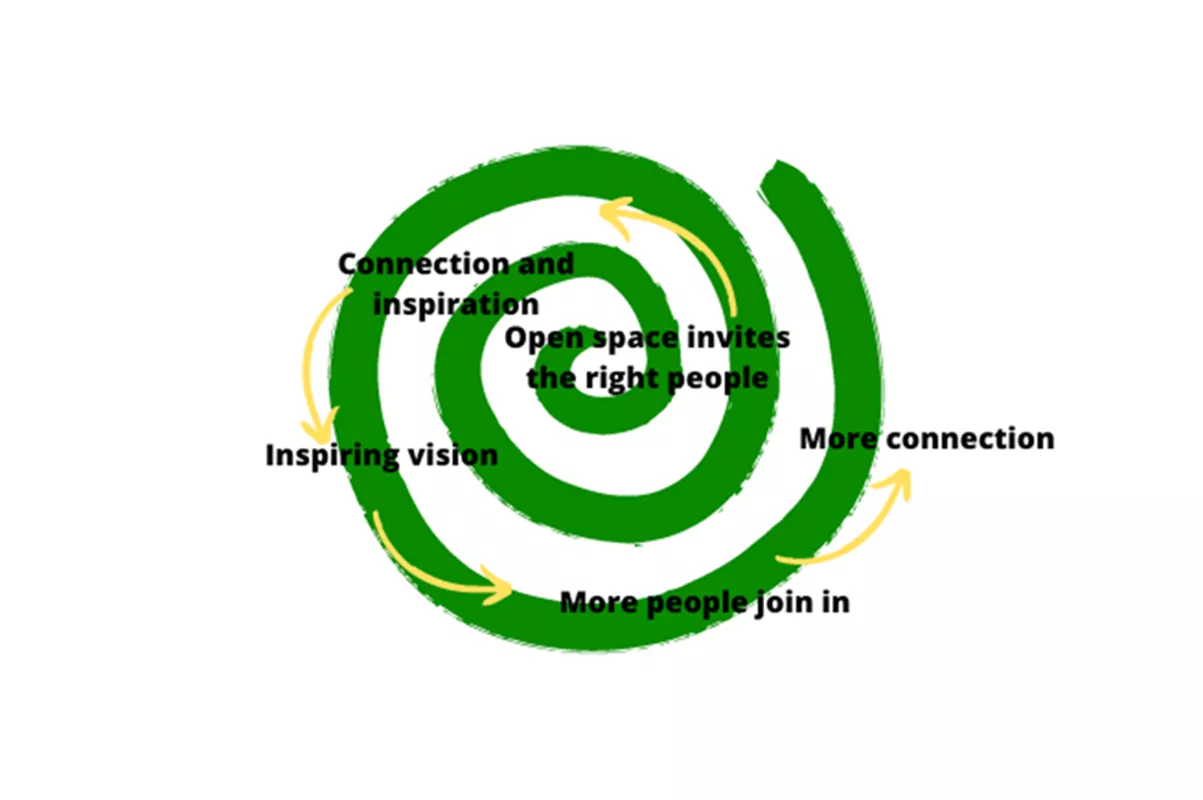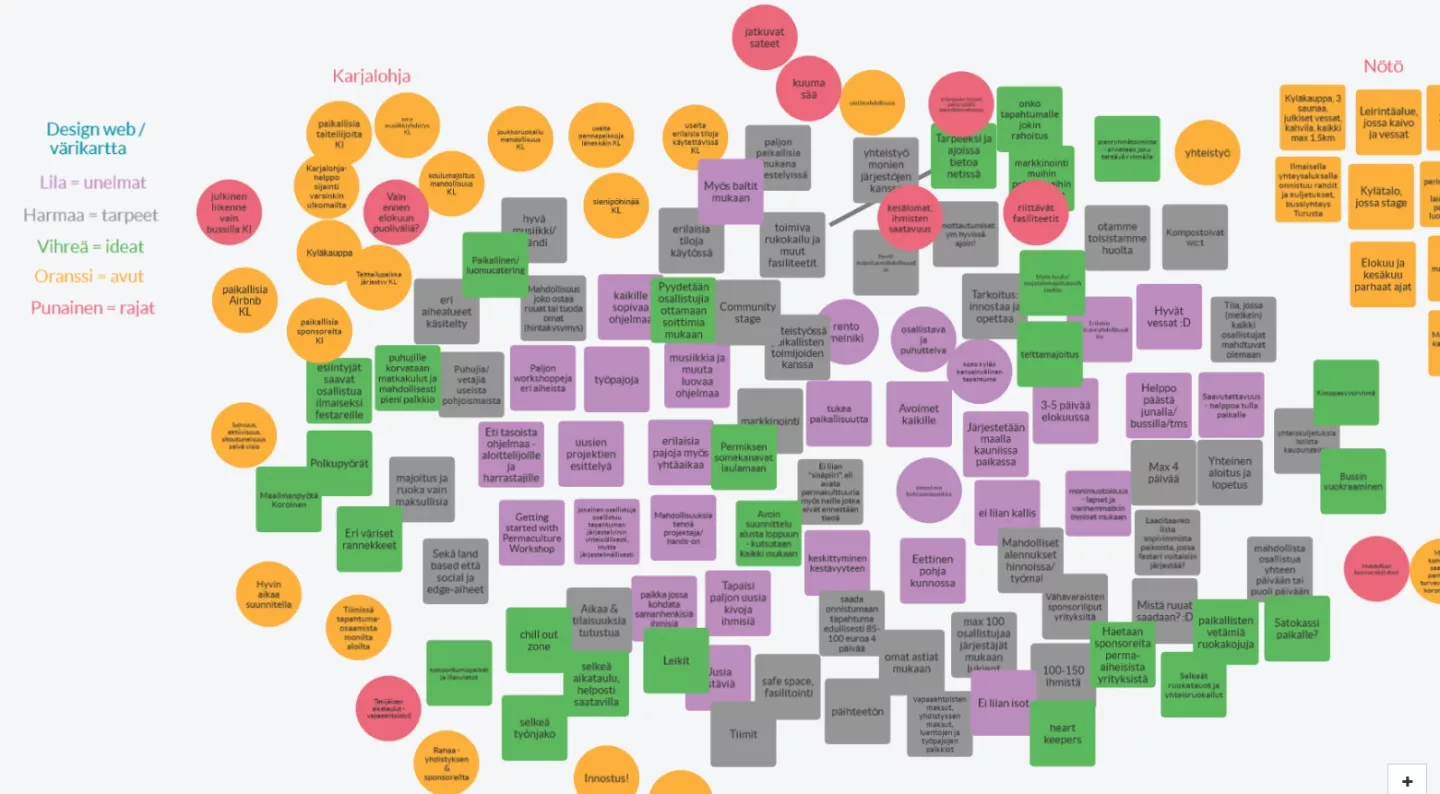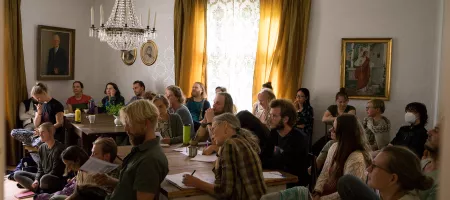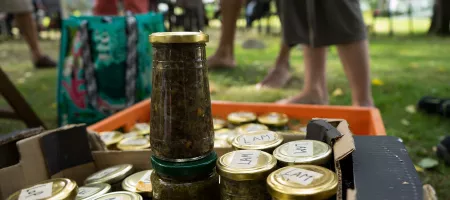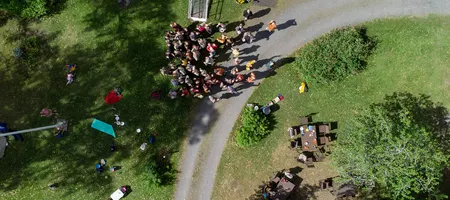Summary
This is the design documentation describing the creation of the Nordic Permaculture Festival 2022 in Vesilahti, Finland. This design describes part one of the design, namely the process of kicking off the ethical and principle-based co-creation of the 11th annual Nordic Permaculture Festival – a gathering of permaculture people from all the Nordic countries to a permaculture event in the spirit of learning and sharing.
Read Part Two of the design here.
Read Part Three of the design here.
Ethics guiding the design
Earth care: create a sustainable festival that doesn’t steal from the Earth (aka take more than it’s share of resources). Enable the festival to inspire and teach people to value and live Earth care in their daily lives.
People care: create a festival with people and for people. Enable learning, teaching, connection and sustainable enjoyment.
Fair share: make sure everyone participating in the creation of the event feels fairly treated and compensated. Enable sharing of knowledge freely. Share any surplus fairly.
Principles used to guide design
Various used within the different phases of the design.
Design Framework
Looby’s Design Web. This design tool is made for people based designs, and it’s flexibility seemed like the right choice for this design.
Client
First the Finnish permaculture enthusiasts and then the whole Nordic permaculture community.
Designer
Lumia Huhdanpää-Jais, in co-creation with the Core Team and all festival participants.
Dates
August 2021-September 2022, write-up into March 2023.
Part One, The Kick-Off Phase
Summary
In this part one, I discuss the WHY this project came to be, and describe the design of the first two workshops. During the first workshop a vision for the festival is co-created in an open space with Finnish permaculture enthusiasts, and in the second one location, time and duration choices of the festival are discussed. This part ends with the choosing of location and my decision to continue as project manager into the Festival Project Phase. For clarity, not all documents created in the process are shown in this design documentation.
Prelude
The Finnish Permaculture Association (FPA) had decided that the Nordic Permaculture Festival 2022 (NPF22) will be held in Finland. The FPA, where I had been active since it’s beginning in 2016, would be the one organizing the event.
We talked about the event with Dominik Jais, the then-chairperson of the FPA and my husband. We were thinking about the best way to get this started in a way where not only the subject of the festival would be permaculture, but the festival itself would be subject to permaculture – we wanted to make sure the planning process would follow permaculture ethics, principles and a design process.
After some thought I offered to kick-start the festival design process. I have experience in hosting workshops and of course permaculture, so Dominik was ok with this. After this simple peer review I just went and designed a first workshop to get things started. At the time at the FPA it was very free to start projects with some peer review, so no board reviews or permit applying was necessary.
Designing the First Workshop
Vision
The vision was to make sure the festival planning would follow permaculture ethics, principles and a design process. After an ethical baseline and a framework would be set, it would be easy for another project manager to take over even with less permaculture knowledge.
My goals for the first meeting were:
- to get the process started by using a design method
- make sure no decisions were made in the first meeting (other than when the next meeting would be) – to really vision and observe first
- make sure the Nordic objectives of the NPF (there are rules set by the Nordic countries) were considered from the beginning
- to get “the train on the right track” regarding ethics, principles and the use of a design method.
Helps
- The Finnish permaculturists!
- The existing communication channels through the FPA.
- My knowledge and imagination
- The knowledge and imagination of my peers, the FPA actives like Dominik
- Different collaboration tools.
Limits
- The objectives of the Nordic Permaculture Festival as an institution
- The limits set by the FPA:
- openness and transparency in planning
- openness and transparency in workshop search and application (see below)
- festival must be from humans to humans → no sales pitches by businesses masked as lectures or workshops
- My knowledge and imagination.
| Attachment | Size |
|---|---|
| Nordic Permaculture Festival guidelines | 48.49 KB |
Ideas
The idea of a highly open space emerged very quick looking at the vision we had for the workshop as well as the whole festival. Also few of the main values of the FPA were at the time openness, transparency and equality. The meetings should be open for all and an open invite should be put up on the FPA’s website and social media channels.
I want to enable as many people as possible to join, the meeting should be held online instead of a specific city or a town.
The event should be as collaborative as possible.
Principles
The yield is theoretically unlimited
By not limiting who can come to the workshop there are limitless possibilities of what the event could be and bring.
Observe & Interact and Use & value diversity
By creating an open space for everyone to join, we can observe who comes and what topics are important to them. Based on the people and their visions, the larger design of the NPF22 can take shape.
By inviting everyone interested in the topic and not calling people we know and trying to recruit them, no (unintentional) project manager bias could bring the project on some well-beaten path instead the right one.
Apply self regulation and accept feedback
It is important to have timely workshops. These kind of meetings have a way of taking forever and the topic mutates into something bigger unless there is tight timekeeping. The scope should be small enough to be able to discuss it in the given time frame.
Design from patterns to details
Start by creating the greater vision, and only then move on to details like location and time.
Patterns
A spiral of abundance for the meeting could be like this
Integration
Needs for the workshop:
- kick off the project on behalf of the FPA
- create an open space for everyone interested
- keep the meeting short and effective
- follow permaculture ethics and a design process
- co-create a vision for the festival
- agree on the next steps of the process.
As I was already somewhat familiar with Looby’s Design Web and it seemed to suit this kind of workshop design very well, I chose to use it for this workshop.
The first meeting aka collaborative design session would be an online meeting on open source platform Jitsi on Monday the 16th of August 2021. The first session would be a 2 hour workshop from 7-9 pm. The agenda includes parts of the Design web, that was used to start designing the festival. As a collaborative tool the Flinga noteboard would be used.
Action
- Create an open invite for the meeting and post in in FPA’s social media in July
- Prepare the meeting by 15th August ‘21. Prepare an agenda, the Flinga app, Jitsi and the slideshow.
- Hold the workshop, 16th Aug ‘21
- Continue the process as agreed in the meeting (perhaps a next meeting, a mail to all participants..?)
Agenda of the meeting:
- Meet & greet, check-in
- Setting the scene: what are the goals of the evening and answer any questions
- Visioning using Flinga collaborative board
- Creating Ideas with Flinga
- Pause
- Review ideas and vision through principles and patterns
- Gathering Helps in Flinga
- Next meeting and next steps
- Feedback & check-out.
Appreciation
The meeting went so well! I was proud of myself and of everyone who participated, we got so much done in such a short time.
Momentum
The meeting didn’t bring up anyone else wanting to take over, so I continued planning and prepared to host the next session, on the 9th September 2021. Which brings us back to
Vision
It was obvious that the location would need to be decided asap, to get the planning on a concrete level and people committed. Therefore the vision for the next meeting was to discuss the location as well as the time and size of the festival.
Helps
Before the second meeting I contacted Reija, project manager of NPF16 as well as the team in Holma, NPF21, and asked what were their requirements for a location. This helped with the analysis and the decision making.
Integration
By September ‘21, we had three locations interested in hosting the festival: the village of Karjalohja, Nötö island and Kurki ecovillage in Vesilahti. On 9th of September Karjalohja and Vesilahti presented themselves in an online session to a group of peers (open invite). We heard two interesting presentations and did a PMI (plus-minus-interesting) analysis of both locations. We also gave ideas on when the event should take place and how long it should be, and did PMIs of those also.
Nötö representative couldn’t make it on the 9th so her presentation was done separately a few days later online.
It was agreed that the decision on the location should be made by the FPA’s board. The board members looked at the recordings of the applications and from what I heard sat together for 3 hours and did extensive analysis with SWOC and 6 thinking hats, and decided the festival would be held at Kurki Ecovillage and the adjacent Rautiala festive house.
Reflection & Momentum
I quickly realized how great the ecovillage would be, as the location is very reachable and has a large community of active people on site already. Also after talking to the Kurki team it became evident that there would not be another, on-site project manager for this festival, so I actively decided to see this through as a lead designer / project manager and make this a complete design for my portfolio.
This concludes the first part of this design and we move to second part of the festival project.

